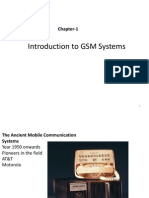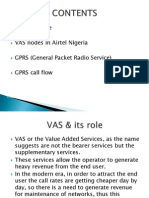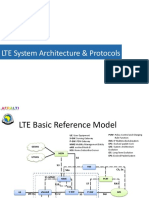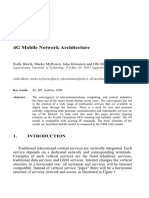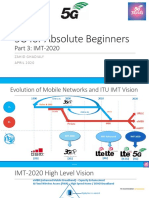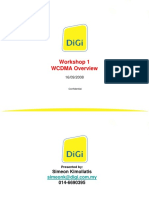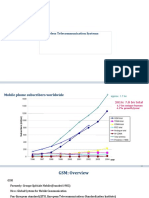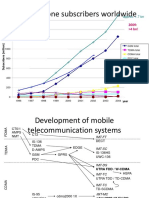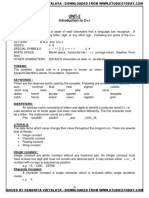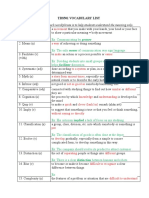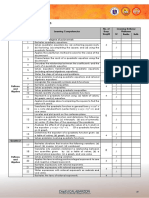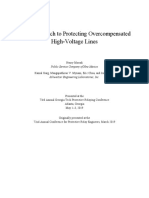100% found this document useful (6 votes)
4K views20 pagesGSM Architecture
The document outlines GSM (Global System for Mobile communications) architecture and technology. It introduces GSM, describing its introduction in 1982 and growth over time. It provides details on GSM's multiple access, duplexing, frequency bands, channel spacing and bitrates. It also briefly describes related digital cellular technologies like DCS1800, USDC, and PDC, and includes a chart comparing their key parameters. Finally, it shows the evolution of mobile networks from 1G to 2G/2.5G/3G and includes a graph depicting growth in subscribers over time for different technologies.
Uploaded by
pradeep66Copyright
© Attribution Non-Commercial (BY-NC)
We take content rights seriously. If you suspect this is your content, claim it here.
Available Formats
Download as PDF, TXT or read online on Scribd
100% found this document useful (6 votes)
4K views20 pagesGSM Architecture
The document outlines GSM (Global System for Mobile communications) architecture and technology. It introduces GSM, describing its introduction in 1982 and growth over time. It provides details on GSM's multiple access, duplexing, frequency bands, channel spacing and bitrates. It also briefly describes related digital cellular technologies like DCS1800, USDC, and PDC, and includes a chart comparing their key parameters. Finally, it shows the evolution of mobile networks from 1G to 2G/2.5G/3G and includes a graph depicting growth in subscribers over time for different technologies.
Uploaded by
pradeep66Copyright
© Attribution Non-Commercial (BY-NC)
We take content rights seriously. If you suspect this is your content, claim it here.
Available Formats
Download as PDF, TXT or read online on Scribd
/ 20
